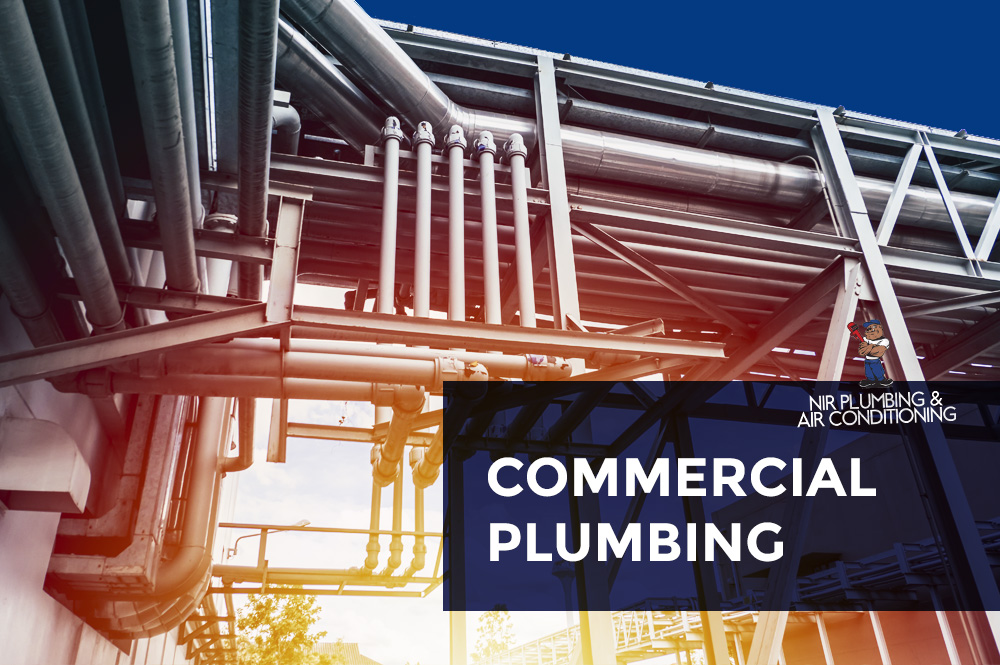Summary: In this article, we’re discussing the fundamentals of commercial plumbing from key differences between commercial and residential plumbing to typical commercial plumbing jobs.
You’ll learn that commercial plumbing is more than just pipes and buildings — there’s a lot more to know about the trade. In this article, we’ll be addressing the following points:
-
Difference between residential and commercial plumbing
-
Types of buildings that need professional commercial plumbing
-
Understanding commercial pipe lining as an alternative
Similar to residential plumbers, commercial plumbers install essential fittings and fixtures, but what else is there?
Difference between residential and commercial plumbing
One of the fundamentals of commercial plumbing is, first, understanding the differences between commercial plumbing and its sibling, residential plumbing.
Commercial plumbing deals with piping systems for commercial spaces that are much more complex compared to residential systems (where the DIY might be doable). Therefore, commercial plumbing requires professional help in most cases. This type of plumbing service is carried out in commercial spaces like multipurpose buildings, high-rise offices, strip malls, hospitals, and warehouses. Some bigger condominium complexes and apartments are also considered as commercial centers.
On the other hand, residential plumbing is carried out for partly-detached townhouses, single-family homes, condominium complexes, and smaller apartments. Depending on the layout and systems of the home, residential plumbing is often not as difficult as commercial plumbing.
The Risk Level. Commercial plumbers likely understand how to repair higher risk damage in commercial buildings. A broken pipe affecting over ten floors of a commercial building can be potentially disastrous to various offices and establishments.
Plumbing is expected to abide by stringent codes and healthcare regulations in establishments and restaurants in the beverage and food businesses. They specialized in both residential and commercial plumbing, such as upgrading and improving your old furnaces, water boilers, and heaters to the latest highly functional ones.
The Complexity of Building Structure. It is easier to steer through the plumbing work in residential houses, unlike the enormous and complicated system of a commercial building. Commercial businesses and buildings have many floors; several sinks and toilets are used each day. The water pressure is another factor to be considered, particularly for high-rise buildings.
The Size. When it comes to commercial plumbing, size matters in comparison to residential plumbing jobs. Commercial plumbing jobs are more extensive and larger when compared to residential plumbing. This is because you’re dealing with large properties like a business, an apartment complex, or a mall.
These building types are in the category of commercial plumbing services. Therefore, commercial properties require extra pipe systems, unlike the residential properties.
In a commercial property, whatever goes wrong can affect the whole building and those who are occupying it. One busted pipe on the 7th floor of a building could affect all the other floors, and vice versa.
However, the extent of damage in residential properties is restricted to the affected house. Rarely will there be a busted pipe in one home that affects the entire neighborhood, or even the neighbors’ homes!
Residential properties need fewer outlets and piping in contrast., and residential plumbing and repairs can be finished quicker and affect fewer occupants, unlike commercial plumbing repairs.
Related article(s): Everything You Wanted to Know about Commercial Plumbing
Types of buildings that need professional commercial plumbing
You already know that commercial plumbing is large-scale work. So, what types of places might benefit from the more complex skill set required for such jobs? In short, pretty much most public structures. Here are a few examples:
-
Offices — Maybe your bathroom trips aren’t the most pleasant. Especially in multi-stall bathrooms, a clogged or flooding toilet or backed up breakroom sink could draw negative attention and might even affect people’s workflow and productivity.
-
Restaurants — Faulty equipment in a restaurant kitchen puts food at risk and can prevent the chef from properly preparing meals altogether. Fruits and veggies can’t be rinsed if the water is off… you can’t even make pasta! (We like pasta.)
-
Apartments — We’ve all seen the common TV plot when the resident upstairs floods his bathtub, crashing to the apartment below. While this might be an isolated incident, a faulty water system in the building could be to blame. You don’t want the same problem to affect the entire complex, as it would result in widespread ceiling and flood damage.
Related article(s): Commercial Plumbing Overview
Understanding commercial pipe lining as an alternative
If your building or office is experiencing pipe or drain problems, you might want to consider commercial pipe lining. Pipe lining sewer repair is a faster and cheaper alternative to traditional sewer replacement.
Getting plumbing work done on your building could be an inconvenience — you might have to close the business for a period of time or, even worse, keep the business open and risk unwanted smells and unhappy employees or customers who have to experience it.
Instead of inconveniencing your business, the problem will be solved efficiently (usually in less than a day) with commercial pipe lining. In turn, your business will experience minimal disruption during the repair or replacement.
If you’re not familiar with commercial pipe lining, it’s a type of pipe lining that doesn’t require digging trenches or excavations. The foundation of your building will remain unharmed which means that you won’t have to rebuild big structures. (Talk about a major convenience!)
Trenchless pipe lining can be up to 75 percent cheaper than traditional pipe lining, making it a very attractive alternative. This type of pipe lining is cost-effective because it only requires a small team of plumbing technicians and a few pieces of special equipment.
Commercial pipe lining can fix a variety of problems including parking lot storm/sewer drains, vertical roof drains, any pipe size from 2 inches to 84 inches in diameter, and mainline sewers. It typically lasts for up to 50 years, which is another great benefit (half a century isn’t too shabby if you ask us). The process is also odorless, so you don’t have to worry about bad smells disrupting your space.
Related article(s): What Is Commercial Pipe Lining?


